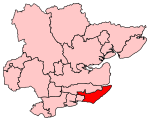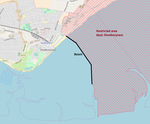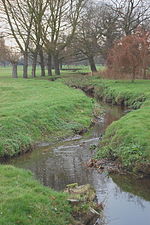Havengore Island

Havengore Island is a low-lying, marshy island in the civil parish of Foulness, in the Rochford district, in the county of Essex, England. It is bounded by New England Creek to the north, Havengore Creek to the south west, the Middleway to the north west, with the North Sea to the south and east. It is linked by bridges to the mainland and to New England Island, from which the road continues to Foulness. Its south east coast borders the North Sea and like its south west shore is protected by levees. The island has never been heavily populated and now has a few buildings along its single road. Its southern end is Ministry of Defence land. HMS Beagle is said to have been used to block one of the channels around the island in its last days.
Excerpt from the Wikipedia article Havengore Island (License: CC BY-SA 3.0, Authors, Images).Havengore Island
Bridge Road, Essex
Geographical coordinates (GPS) Address Nearby Places Show on map
Geographical coordinates (GPS)
| Latitude | Longitude |
|---|---|
| N 51.566666666667 ° | E 0.85 ° |
Address
Bridge Road
Bridge Road
SS3 9XD Essex, Foulness
England, United Kingdom
Open on Google Maps











